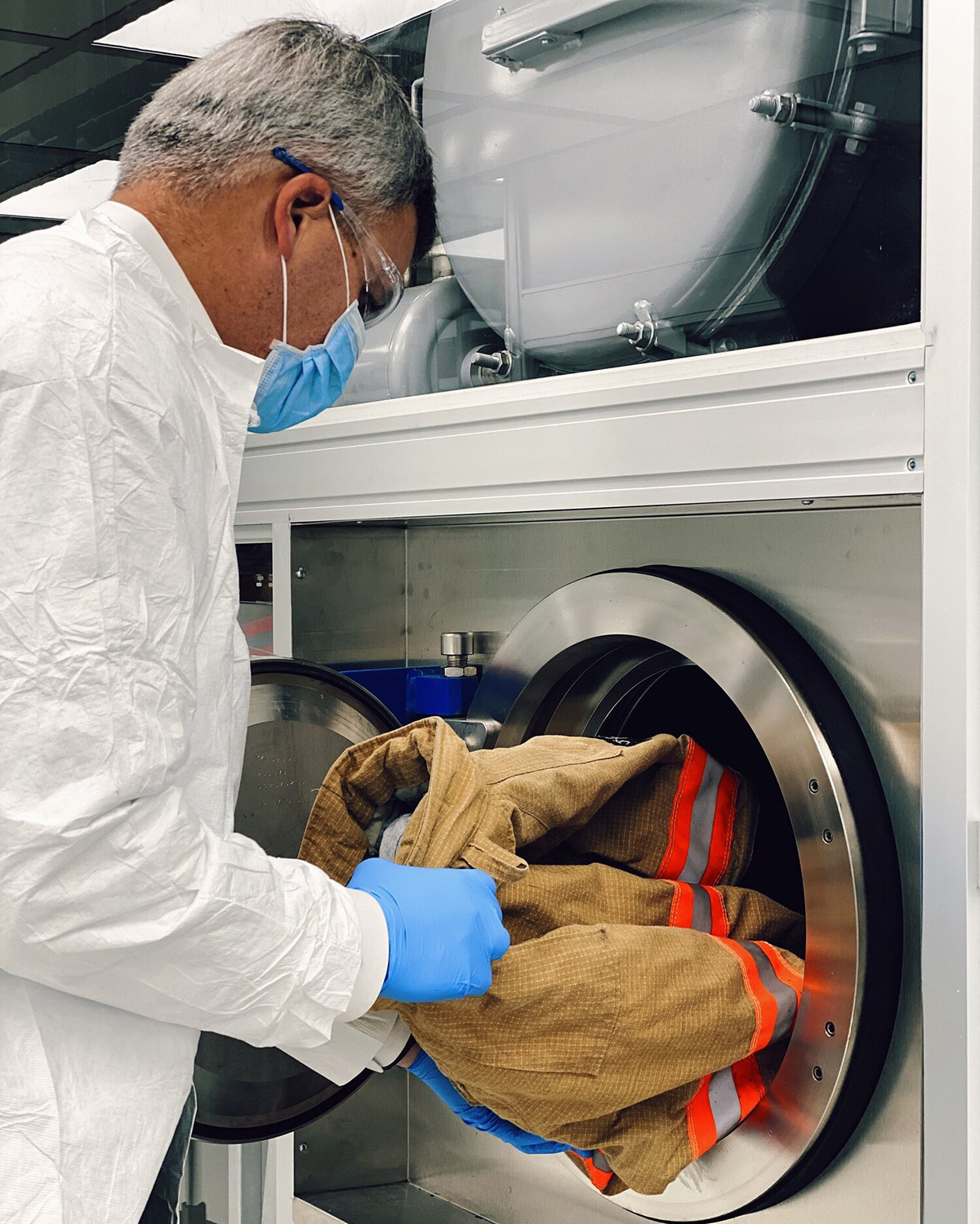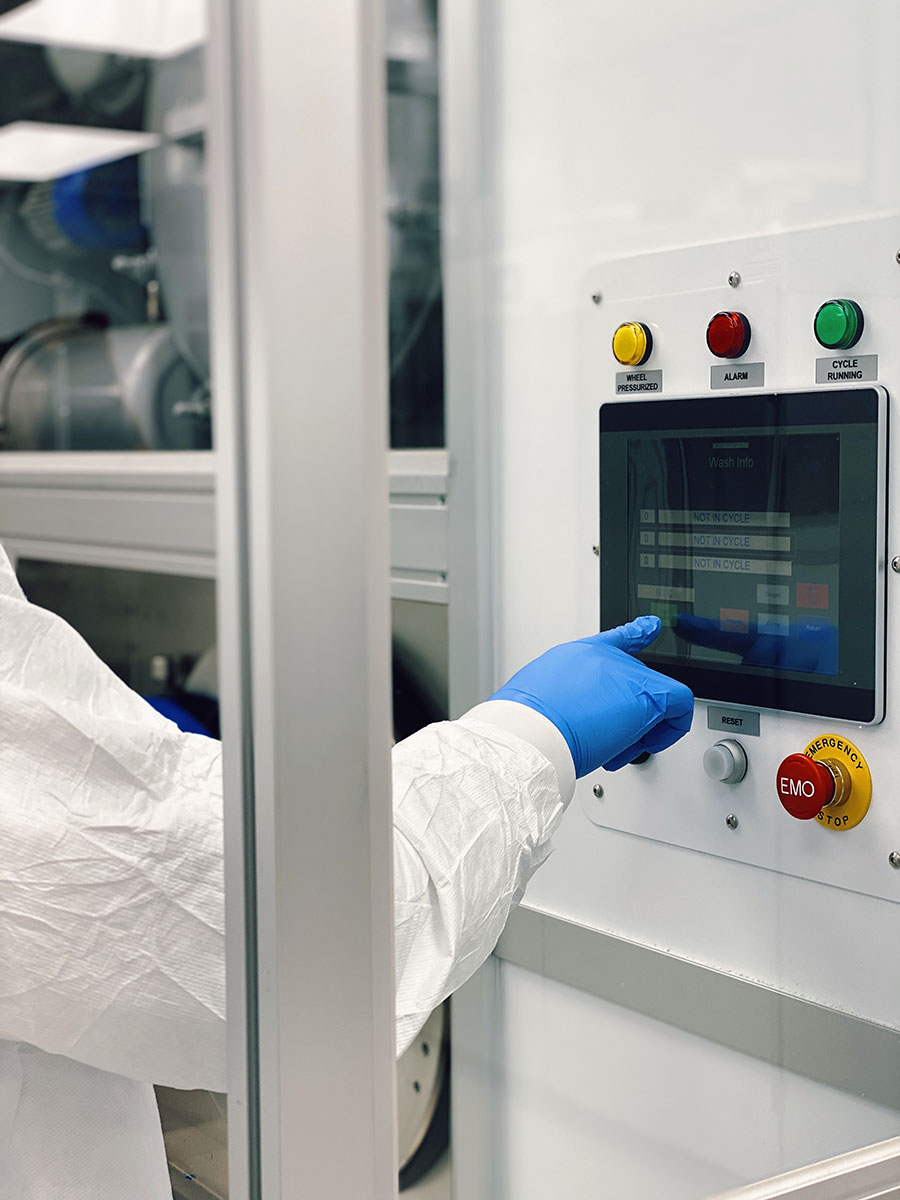By: Emergency Technical Decon Team
When firefighters return from a call, the battle may be over, but the risk isn’t. Contaminated turnout gear doesn’t just affect the person wearing it. It affects the entire station.
Bringing the Hazards Home
After a fire or emergency call, gear is often covered in soot, smoke residue, PFAS, and other harmful substances. Even if it appears clean, microscopic contaminants remain embedded in fabrics and seams. When that gear is worn back to the station or tossed into common areas, it transfers toxins onto benches, floors, truck cabs, lockers, and laundry rooms.
Over time, these exposures create a dangerous domino effect. Once safe surfaces become secondary contamination zones. Carcinogens that were once isolated to the scene of a fire now linger in the places firefighters eat, sleep, and work between calls.
The Science of Secondary Exposure
Studies show that off-gassing from contaminated gear can release volatile organic compounds (VOCs) into the air, even hours after a fire. This means station personnel and even visitors may be breathing in harmful chemicals long after a call ends.
Toxic particles that settle onto couches, lockers, or the kitchen table can be absorbed through the skin, inhaled, or ingested, especially in stations without clear gear segregation policies.
Culture Shift: From Convenience to Safety
For years, storing gear in the day room or bringing it home was common practice. But as cancer rates rise among firefighters, departments are re-evaluating those habits.
In response, many stations are taking these proactive steps:
- Designating clean and dirty zones
- Prohibiting gear in living quarters and personal vehicles
- Installing specialized storage and ventilation for PPE
- Scheduling routine professional decontamination for all gear
This shift isn’t about inconvenience—it’s about prevention.
How ETD Helps Minimize Station Contamination
At Emergency Technical Decon (ETD), we help departments move from reaction to prevention. Our Liquid CO2+ decontamination process removes over 84% of PFAS and other persistent contaminants—far beyond what conventional washing can do.
We also work with departments to build sustainable cleaning and rotation programs, so gear never lingers in the station longer than necessary. Whether you’re an urban department with high call volume or a rural crew with limited resources, our logistics and support services make it easy to stay on schedule and in compliance.
It’s Not Just About the Gear
Protecting firefighters means protecting the spaces they live and work in every day. Clean gear doesn’t just reduce cancer risk for one individual—it helps keep the whole station safer, healthier, and more operationally ready.
Want to protect your station from hidden exposure? Let’s talk about how ETD can support your department with a station-wide decontamination plan.



